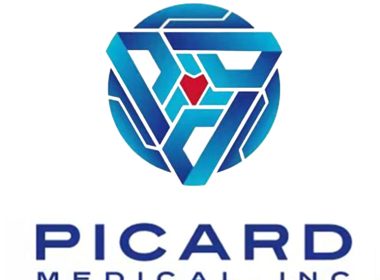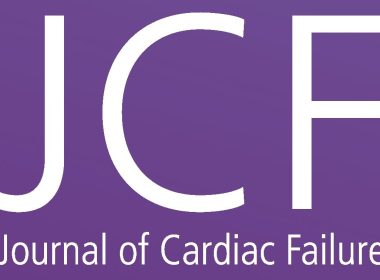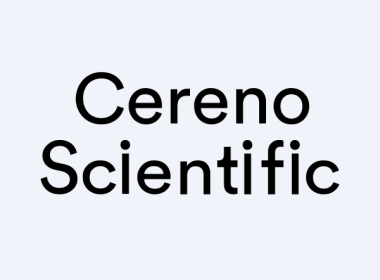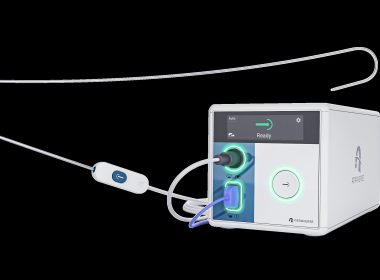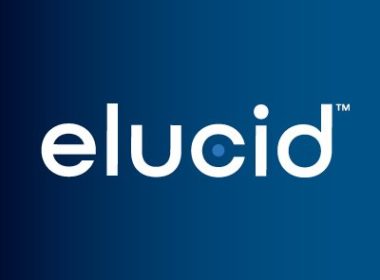-Picard Medical / SynCardia Systems LLC mark historic milestone as a patient reaches 2,900 days of continuous support with the SynCardia Total Artificial Heart — the longest timeframe in the world ever recorded- TUCSON, Ariz., Dec. 09, 2025 (GLOBE NEWSWIRE) — Picard Medical, Inc. (NYSE American: PMI) (“Picard” or the “Company”), parent company of SynCardia Systems LLC, maker of the world’s first total artificial heart approved by both the U.S. FDA and Health Canada, proudly marks a new milestone in the field of mechanical circulatory support with a patient living over eight years or 2,900 days with a SynCardia™ Total Artificial Heart (STAH), the longest timeframe that a patient has ever lived on an artificial heart. “This achievement shows the life-changing impact of the SynCardia Total Artificial Heart, offering not only a bridge to transplant but also durable long-term support, to support life far beyond the typical time span for patients waiting for a donor heart,” said Patrick NJ Schnegelsberg, Chief Executive Officer of Picard Medical. “In this case, the STAH demonstrates long-term durability and reliability as well as fills a life-saving gap for patients who would otherwise have no viable options. Building on this foundation of long-term success, Picard Medical is now developing the Emperor, its next generation of fully implantable, artificial heart systems to broaden access and provide greater flexibility for long-term support worldwide.” About the Patient A 46-year-old patient, facing end-stage heart failure, received the SynCardia Total Artificial Heart on December 9, 2017 at the Institute for Cardiovascular Diseases, Dedinje hospital (also known as “IVDK Dedinje Hospital”) in Belgrade, Serbia. Today, eight years later, this patient continues to live supported by the SynCardia Total Artificial Heart, reaching more than 2,900 days of extended life, with most of those days spent at home with family and loved ones. The dedication of the medical team at IVDK Dedinje Hospital, combined with SynCardia’s technology, continues to make a profound difference in this patient’s journey. Long-term Success Concentrated in Serbia Serbia continues to lead the world in long-duration support with the SynCardia Total Artificial Heart. The five longest supported patients globally are all from IVDK Dedinje Hospital in Belgrade, with one patient supported for about eight years, another for more than four years, a third for more than three years, and two additional patients each supported for just under three years. These extraordinary cases reflect the strength of the clinical program in the region and the dedication of Serbian cardiac surgeons and transplant teams at IVDK Dedinje Hospital, who have advanced the SynCardia Total Artificial Heart at an exceptional level. About Picard Medical and SynCardia Picard Medical, Inc. is the parent company of SynCardia Systems, LLC (“SynCardia”), the Tucson, Arizona–based leader with the only commercially available total artificial heart technology for patients with end-stage heart failure. SynCardia develops, manufactures, and commercializes the SynCardia Total Artificial Heart (“STAH”), an implantable system that assumes the full functions of a failing or failed human heart. It is the first artificial heart approved by both the FDA and Health Canada, and it remains the only commercially available artificial heart in the United States and Canada. With more than 2,100 implants performed at hospitals across 27 countries, the SynCardia Total Artificial Heart is the most widely used and extensively studied artificial heart in the world. For additional information about Picard Medical, please visit www.picardmedical.com or review the Company’s filings with the U.S. Securities and Exchange Commission at www.sec.gov. Forward-Looking Statements This press release includes forward-looking statements that involve risks and uncertainties. Forward-looking statements are statements that are not historical facts. Such forward-looking statements are subject to risks and uncertainties, which could cause actual results to differ from the forward-looking statements. The Company expressly disclaims any obligations or undertaking to release publicly any updates or revisions to any forward-looking statements contained herein to reflect any change in the Company’s expectations with respect thereto or any change in events, conditions, or circumstances on which any statement is based. Forward-looking statements are subject to numerous conditions, many of which are beyond the control of the Company, including those set forth in the Risk Factors section of the Registration Statement and related prospectus filed in connection with the initial public offering with the SEC. Copies are available on the SEC’s website, http://www.sec.gov. Contact: InvestorsEric RibnerManaging DirectorLifeSci Advisors LLCeric@lifesciadvisors.com Picard Medical, Inc./SynCardia Systems, LLCIR@picardmedical.com General/MediaBrittany Lanzablanza@syncardia.com
Coronary/Structural Heart
Journal of Cardiac Failure December Issue Showcases Innovations in Transplant Care, Digital Therapeutics, and Global Heart Failure Treatment Strategies
WASHINGTON, Dec. 9, 2025 /PRNewswire/ — The December issue of the Journal of Cardiac Failure (JCF), now available, offers a robust lineup of original research, expert consensus, and clinical insights that explore heart failure (HF) through a multidisciplinary, inclusive, and globally…
Cereno Scientific Receives FDA Clearance to Initiate Global Phase IIb Trial of CS1 in Pulmonary Arterial Hypertension (PAH)
GOTHENBURG, Sweden, Dec. 8, 2025 /PRNewswire/ — Cereno Scientific (Nasdaq First North: CRNO B), an innovative biotech pioneering treatments to enhance and extend life for people with rare cardiovascular and pulmonary diseases, today announced that the U.S. Food and Drug Administration…
Solid Biosciences to Showcase Proprietary Next-Generation Capsid AAV-SLB101 and Cardiac Gene Therapy Pipeline at the 22nd Global CardioVascular Clinical Trialists (CVCT) Forum
CHARLESTOWN, Mass., Dec. 08, 2025 (GLOBE NEWSWIRE) — Solid Biosciences Inc. (Nasdaq: SLDB) (the “Company” or “Solid”), a life sciences company developing precision genetic medicines for neuromuscular and cardiac diseases, today announced that it will present data from its next-generation, proprietary capsid AAV-SLB101 and its cardiac gene therapy pipeline at the Global CardioVascular Clinical Trialists (CVCT) Forum taking place December 8-10, 2025, in Washington, D.C. Gabriel Brooks, M.D., Solid’s Chief Medical Officer, will exhibit a poster, deliver two presentations and participate in two panel discussions. Dr. Brooks has also been selected as a CVCT faculty member. Additionally, Nicolas Christoforou, Ph.D., Solid’s Head of Discovery and Translational Development, will deliver a presentation on the preclinical development of a gene therapy for catecholaminergic polymorphic ventricular tachycardia (CPVT) and participate in a panel discussion. The CVCT Forum is an annual, invite-only workshop that aims to cultivate a multi-stakeholder exchange to enhance clinical trials, streamline regulatory approval processes, and facilitate the implementation of trial-based evidence. “We will present data illustrating the potential of our precision genetic approach to cardiac diseases, with a specific focus on the benefits of our proprietary, rationally designed capsid, AAV-SLB101,” said Dr. Brooks. “We look forward to discussing our findings with the community of scientists and trialists as we come together with the goal of transforming the future of cardiovascular disease treatments.” Poster: Title: AAV-SLB101: A Next-Generation Rationally Designed Capsid Demonstrates Highly Potent Cardiac Tropism and Initial Clinical Safety Presentations: Gene-Based Cardiac Therapy Part 1The Basics Title: AAV-SLB101: A Next-Generation Rationally Designed Capsid Demonstrates Highly Potent Cardiac Tropism and Initial Clinical SafetyPresenter: Dr. Gabriel Brooks Gene-Based Cardiac Therapy Part 2The Trials and Beyond Title: Cardiac Gene Therapy – An Industry Prospective: Drive to Inflection PointPresenter: Dr. Gabriel Brooks Title: Preclinical Development of a Gene Therapy Strategy for Patients with Catecholaminergic Polymorphic Ventricular TachycardiaPresenter: Dr. Nicolas Christoforou on behalf of Silvia Priori, M.D., Ph.D., Professor of Cardiology at the University of Pavia and Director of the Molecular Cardiology Unit at the IRCCS Maugeri in Pavia, Italy Panel Discussions: The CVCT Multi-Stakeholder Think Tank DebateGene-Based Cardiac Therapy Part 1 Title: The Basics. What it Needs to Get Gene Therapy Innovations into Clinical Stage?Panelist: Dr. Gabriel Brooks The CVCT Multi-Stakeholder Think Tank DebateGene-Based Cardiac Therapy Part 2 Title: How are We Getting Around Specific Gene Therapy Clinical Trial Challenges?Panelists: Drs. Gabriel Brooks and Nicolas Christoforou Following completion of the conference, presentations will be available on the Scientific Publications & Presentations page of the Our Science section of the Company website, or by clicking here. About Solid BiosciencesSolid Biosciences is a precision genetic medicine company focused on advancing a portfolio of gene therapy candidates targeting rare neuromuscular and cardiac diseases, including SGT-003 for Duchenne muscular dystrophy (Duchenne), SGT-212 for Friedreich’s ataxia (FA), SGT-501 for catecholaminergic polymorphic ventricular tachycardia (CPVT), SGT-601 for TNNT2-mediated dilated cardiomyopathy and additional fatal, genetic cardiac diseases. The Company is also focused on developing innovative libraries of genetic regulators and other enabling technologies with promising potential to significantly impact gene therapy delivery cross-industry. Solid is advancing its diverse pipeline and delivery platform in the pursuit of uniting experts in science, technology, disease management, and care. Patient-focused and founded by those directly impacted by Duchenne, Solid’s mission is to improve the daily lives of patients living with devastating rare diseases. For more information, please visit www.solidbio.com. Forward-Looking StatementsThis press release contains “forward-looking statements” within the meaning of the Private Securities Litigation Reform Act of 1995, including statements regarding future expectations, plans and prospects for the Company; the ability to successfully achieve and execute on the company’s goals, priorities and achieve key clinical milestones; the Company’s pipeline of capsid products, including SLB-101, and programs for neuromuscular and cardiac diseases, including its SGT-003 candidate and other clinical and pre-clinical programs and expectations for clinical development, initiation and enrollment in clinical trials, dosing, availability of clinical trial data and potential accelerated approval;; and other statements containing the words “anticipate,” “believe,” “continue,” “could,” “estimate,” “expect,” “intend,” “may,” “plan,” “potential,” “predict,” “project,” “should,” “target,” “would,” “working” and similar expressions. Any forward-looking statements are based on management’s current expectations of future events and are subject to a number of risks and uncertainties that could cause actual results to differ materially and adversely from those set forth in, or implied by, such forward-looking statements. These risks and uncertainties include, but are not limited to, risks associated with the company’s ability to advance and license AAV-SLB101 and advance SGT-003 and its other clinical and preclinical programs and capsid libraries on the timelines expected or at all; obtain and maintain necessary approvals from the FDA and other regulatory authorities; replicate in clinical trials positive results found in preclinical studies and early-stage clinical trials of the company’s product candidates; obtain, maintain or protect intellectual property rights related to its capsid libraries and product candidates; compete successfully with other companies that are seeking to develop capsids, capsid libraries, Duchenne, Friedreich’s ataxia and other neuromuscular and cardiac treatments and gene therapies;, achieve its other business objectives and continue as a going concern. For a discussion of other risks and uncertainties, and other important factors, any of which could cause the company’s actual results to differ from those contained in the forward-looking statements, see the “Risk Factors” section, as well as discussions of potential risks, uncertainties and other important factors, in the company’s most recent filings with the Securities and Exchange Commission. In addition, the forward-looking statements included in this press release represent the company’s views as of the date hereof and should not be relied upon as representing the company’s views as of any date subsequent to the date hereof. The company anticipates that subsequent events and developments will cause the company’s views to change. However, while the company may elect to update these forward-looking statements at some point in the future, the company specifically disclaims any obligation to do so. Solid Biosciences Investor Contact:Nicole AndersonDirector, Investor Relations and Corporate CommunicationsSolid Biosciences Inc.investors@solidbio.com Media Contact:Glenn SilverFINN Partnersglenn.silver@finnpartners.com
Orchestra BioMed Announces AVIM Therapy and Virtue SAB Program Presentations at ICI Meeting
Joint presentation by Orchestra BioMed and Medtronic leadership to discuss ongoing strategic collaboration for development and commercialization of AVIM Therapy for treatment of uncontrolled hypertension in patients indicated for a pacemaker NEW HOPE, Pa., Dec. 08, 2025 (GLOBE NEWSWIRE) — Orchestra BioMed Holdings, Inc. (Nasdaq: OBIO, “Orchestra BioMed” or the “Company”), a biomedical innovation company accelerating high-impact technologies to patients through risk-reward sharing partnerships, today announced three presentations at the 2025 Innovation in Cardiology Intervention (“ICI”) meeting in Tel Aviv, Israel, including two presentations focused on Atrioventricular Interval Modulation Therapy (“AVIM Therapy”) and one focused on Virtue® Sirolimus AngioInfusion™ Balloon (“Virtue SAB”). The AVIM Therapy presentations will highlight the structure and operational strength of the Company’s strategic collaboration with Medtronic, plc (NYSE: MDT, “Medtronic”), as well as the therapy’s potential clinical utility in hypertensive heart disease. The Power of Partnerships: Orchestra BioMed and Medtronic’s Collaboration to Advance AVIM Therapy to Patients, presented by David Hochman, Chairman and Chief Executive Officer of Orchestra Biomed and Robert C. Kowal, M.D., Ph.D., Vice President and General Manager of Cardiac Pacing Therapies within the Medtronic Cardiac Rhythm Management operating unit (December 9, 2025; 14:00 IST / 07:00 AM EST)AVIM Therapy for the Treatment of Hypertensive Heart Disease, presented by Avi Fischer, M.D., Senior Vice President of Medical Affairs and Innovation, Orchestra Biomed (December 8, 2025; 15:12 IST / 08:12 AM EST) The Virtue SAB presentation will provide insights into the novel design of this first non-coated drug delivery system for coronary artery disease treatment, as well as the Virtue IDE trial focused on coronary in-stent restenosis. Virtue SAB and the Virtue Trial: A Next-Generation, Non-Coated Sirolimus-Eluting AngioInfusion Balloon and IDE Coronary ISR Trial vs. AGENT PCB, presented Bill Little, Executive Vice President of Corporate Development and Strategy (December 8, 2025; 14:00 JST / 07:00 AM EST) About Orchestra BioMed Orchestra BioMed is a biomedical innovation company accelerating high-impact technologies to patients through strategic collaborations with market-leading global medical device companies. The Company’s two flagship product candidates – Atrioventricular Interval Modulation (AVIM) Therapy and Virtue® Sirolimus AngioInfusion™ Balloon (Virtue SAB) – are currently undergoing pivotal clinical trials for their lead indications, each representing multi-billion-dollar annual global market opportunities. AVIM Therapy is a bioelectronic treatment for hypertension, the leading risk factor for death worldwide, and is designed to be delivered as a firmware upgrade to a pacemaker and achieve immediate, substantial and sustained reductions in blood pressure in patients with hypertensive heart disease. The Company has a strategic collaboration with Medtronic, one of the largest medical device companies in the world, for the development and commercialization of AVIM Therapy for the treatment of uncontrolled hypertension in pacemaker-indicated patients. AVIM Therapy has FDA Breakthrough Device Designation for these patients, as well as an estimated 7.7 million total patients in the U.S. with uncontrolled hypertension despite medical therapy and increased cardiovascular risk. Virtue SAB is a highly differentiated, first-of-its-kind drug delivery angioplasty balloon system designed to deliver a proprietary extended-release formulation of sirolimus, SirolimusEFR™, for the treatment of atherosclerotic artery disease, the leading cause of mortality worldwide. Virtue SAB has been granted Breakthrough Device Designation by the FDA for the treatment of coronary ISR, coronary small vessel disease and below-the-knee peripheral artery disease. For further information about Orchestra BioMed, please visit www.orchestrabiomed.com, and follow us on LinkedIn. About AVIM Therapy AVIM Therapy is an investigational therapy compatible with standard dual-chamber pacemakers designed to substantially and persistently lower blood pressure. It has been evaluated in pilot studies in patients with hypertension who are also indicated for a pacemaker. MODERATO II, a double-blind, randomized pilot study, showed that patients treated with AVIM Therapy experienced net reductions of 8.1 mmHg in 24-hour ambulatory systolic blood pressure (aSBP) and 12.3 mmHg in office systolic blood pressure (oSBP) at six months when compared to control patients. In addition to reducing blood pressure, clinical results using AVIM Therapy demonstrate improvements in cardiac function and hemodynamics. The BACKBEAT (BradycArdia paCemaKer with atrioventricular interval modulation for Blood prEssure treAtmenT) global pivotal study is evaluating the safety and efficacy of AVIM Therapy in lowering blood pressure in patients who have systolic blood pressure above target despite anti-hypertensive medication and who are indicated for or have recently received a dual-chamber cardiac pacemaker. AVIM Therapy has been granted Breakthrough Device Designation by the FDA for the treatment of uncontrolled hypertension in patients who have increased cardiovascular risk. About Virtue SAB Virtue SAB is a highly differentiated, first-of-its-kind drug delivery angioplasty balloon system designed to deliver a proprietary extended-release formulation of sirolimus, SirolimusEFR™. It uses a non-coated microporous AngioInfusion™ Balloon to protect the drug in transit and consistently deliver a large liquid dose, overcoming certain limitations of drug-coated balloons. SirolimusEFR delivered by Virtue SAB has been shown in published preclinical series involving hundreds of arterial deliveries to achieve sustained tissue levels well above the known required therapeutic tissue concentration for inhibiting restenosis (1 ng/mg tissue) for the entire critical healing period of approximately 30 days. Virtue SAB demonstrated positive three-year clinical data in coronary ISR in the SABRE study, a multi-center, prospective, independent core lab-adjudicated clinical study of 50 patients conducted in Europe. Virtue SAB has been granted Breakthrough Device Designation by the FDA for the treatment of coronary ISR, coronary small vessel disease and peripheral artery disease below-the-knee. Investor Contact:Silas NewcombOrchestra BioMedSnewcomb@orchestrabiomed.com Media Contact:Kelsey Kirk-EllisOrchestra BioMedkkirkellis@orchestrabiomed.com
Atraverse Medical Secures FDA 510(k) Clearance for HOTWIRE™ RF Generator & Fully Integrated Transseptal Access System
Atraverse Medical also approaches first 2,000 successful clinical procedures using the company’s innovative HOTWIRE™ radiofrequency (RF) guidewire. [San Diego, CA – December 3, 2025] — Atraverse Medical, a medical device company pioneering next-generation left-heart access technology, has received 510(k) clearance from the U.S. FDA for its fully integrated HOTWIRE™ Transseptal […]
VALVOSOFT®, the First Non-Invasive Treatment for Severe Symptomatic Aortic Stenosis (sSAS) from Cardiawave Receives CE Marking
LEVALLOIS-PERRET, France–(BUSINESS WIRE)–Cardiawave, a pioneering medtech company developing non-invasive ultrasound therapy (NIUT) for aortic stenosis, has received CE Certificate for Valvosoft®, the world’s first non-invasive therapeutic alternative to treat Severe Symptomatic Aortic Stenosis (sSAS), a serious, degenerative and fast-growing disease due to population aging, which remains without a solution for […]
Rising Stars in Cardiac Electrophysiology: ABC Announces 2026-2027 Fellowship Recipients
WASHINGTON, Dec. 4, 2025 /PRNewswire/ — The Association of Black Cardiologists (ABC) proudly announces the recipients of its 2026–2027 Cardiac Electrophysiology (EP) Fellowship Support Awards, which recognize outstanding physicians pursuing advanced subspecialty training in cardiac…
Lexeo Therapeutics to Host Virtual Key Opinion Leader Event at the 22nd Global Cardiovascular Clinical Trialists (CVCT) Forum
NEW YORK, Dec. 04, 2025 (GLOBE NEWSWIRE) — Lexeo Therapeutics, Inc. (Nasdaq: LXEO), a clinical stage genetic medicine company dedicated to pioneering novel treatments for cardiovascular diseases, today announced plans to host a virtual event, “A Clinician’s Perspective: Holistic Approach to Managing PKP2-Associated Arrhythmogenic Cardiomyopathy,” at the 22nd Global Cardiovascular Clinical Trialists (CVCT) Forum on Tuesday, December 9th at 3 PM ET. The session will feature a discussion with Dr. Victoria Parikh, M.D., who is Associate Professor of Cardiovascular Medicine at Stanford University and Director of the Stanford Center for Inherited Cardiovascular Disease, and an expert clinician scientist who cares for people living with PKP2-associated arrhythmogenic cardiomyopathy (PKP2-ACM). Analysts and investors can join the live event by registering on the News & Events page on Lexeo’s website. A replay will be archived on the investor section of Lexeo’s website following the event. About Lexeo TherapeuticsLexeo Therapeutics is a New York City-based, clinical stage genetic medicine company dedicated to reshaping heart health by applying pioneering science to fundamentally change how cardiovascular diseases are treated. The Company is advancing a portfolio of therapeutic candidates that take aim at the underlying genetic causes of conditions, including LX2006 in Friedreich ataxia (FA), LX2020 in plakophilin-2 (PKP2) arrhythmogenic cardiomyopathy, and others in devastating diseases with high unmet need. Media Response:Media@lexeotx.com Investor Response:Carlo Tanzi, Ph.D.ctanzi@kendallir.com
Elucid Gains Broad CMS Reimbursement of Coronary Plaque Analysis Using PlaqueIQ™
New CPT I Code, OPPS and MPFS Decisions Recognize Significant Clinical Value Across Care Settings BOSTON–(BUSINESS WIRE)–Elucid has announced new Hospital Outpatient Prospective Payment (OPPS) and Physician Fee Schedule (PFS) decisions from the U.S. Centers for Medicare & Medicaid Services (CMS) that establish significant reimbursement for coronary plaque analysis using PlaqueIQ […]

